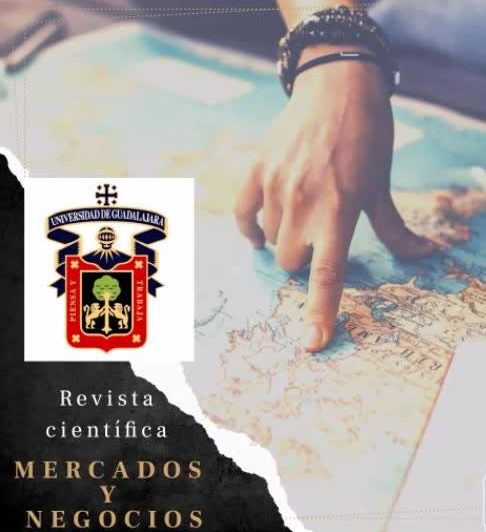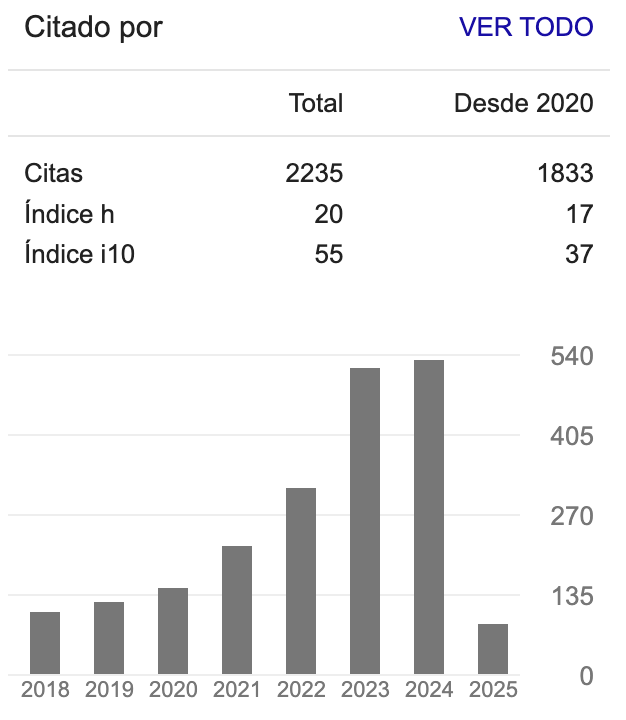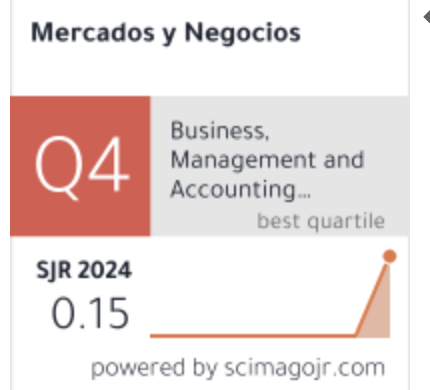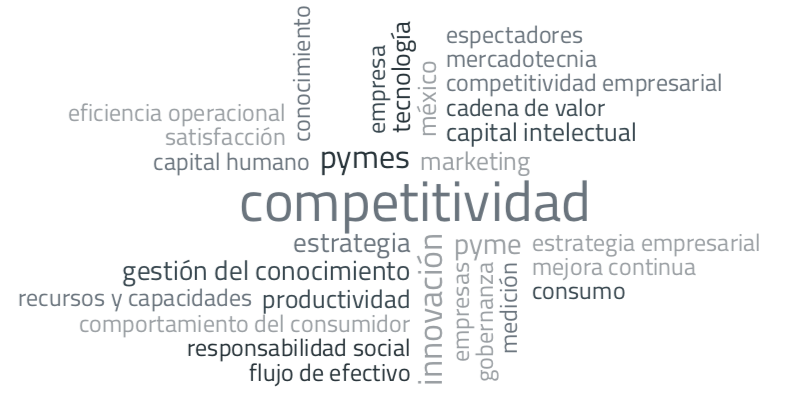Internal Branding Processes in a Fashion Organization: Turning Employees into Brand Ambassadors
DOI:
https://doi.org/10.32870/myn.vi52.7718Keywords:
internal branding, brand ambassadors, salesperson brand identification, frontline employees, fashion brands, competitivenessAbstract
This research aims to empirically examine the internal branding processes implemented by a global sports fashion firm to turn all employees into competent brand ambassadors. Brand-oriented training was hypothesized as an antecedent of salesperson brand identification and brand commitment, which drive brand-aligned behavior, the critical trait of employee brand ambassadors. These hypotheses were tested by surveying 141 corporate and retail employees of a global sportswear fashion brand's regional operations in Mexico. The principal conclusion is that brand-oriented training proves a significant driver of salesperson brand identification. Furthermore, brand identification drives brand commitment and brand-aligned behavior among all company employees, not just salespersons.References
Anisimova, T., & Mavondo, F. T. (2010). The performance implications of company‐salesperson corporate brand misalignment. European Journal of Marketing, 44(6), 771-795. https://doi.org/10.1108/03090561011032711
Arrigo, E. (2018). The key role of retail stores in fast fashion companies: The H&M case study. In Contemporary Case Studies on Fashion Production, Marketing and Operations (pp. 121-137). Springer, Singapore.
Ayrom, S., & Tumer, M. (2021). Effects of internal branding and brand-oriented leadership on work-related outcomes. The Service Industries Journal, 41(15-16), 1097-1117. https://doi.org/10.1080/02642069.2020.1787992
Badrinarayanan, V., & Laverie, D. A. (2011). Brand advocacy and sales effort by retail salespeople: antecedents and influence of identification with manufacturers’ brands. Journal of Personal Selling & Sales Management, 31(2), 123–140. https://doi.org/ 10.2753/PSS0885-3134310202
Barron, L. (2019). The Return of the Celebrity Fashion Muse: Brand Endorsement, Creative Inspiration and Celebrity-Influenced Design Communication. Fashion Theory, 1-20. https://doi.org/10.1080/1362704X.2019.1656946
Baumgarth, C., & Schmidt, M. (2010). How strong is the business-to-business brand in the workforce? An empirically-tested model of ‘internal brand equity’ in a business-to-business setting. Industrial Marketing Management, 39(8), 1250-1260. https://doi.org/10.1016/j.indmarman.2010.02.022
Bergami, M., & Bagozzi, R. P. (2000). Self‐categorization, affective commitment and group self‐esteem as distinct aspects of social identity in the organization. British Journal of Social Psychology, 39(4), 555-577. https://doi.org/10.1348/014466600164633
Brexendorf, T. O., Mühlmeier, S., Tomczak, T., & Eisend, M. (2010). The impact of sales encounters on brand loyalty. Journal of Business Research, 63(11), 1148–1155. https://doi.org/10.1016/j.jbusres.2009.10.011
Brodie, R. J., Whittome, J. R., & Brush, G. J. (2009). Investigating the service brand: A customer value perspective. Journal of Business Research, 62(3), 345-355. https://doi.org/10.1016/j.jbusres.2008.06.008
Buil, I., Martínez, E., & Matute, J. (2016). From internal brand management to organizational citizenship behaviours: Evidence from frontline employees in the hotel industry. Tourism Management, 57, 256-271. https://doi.org/10.1016/j.tourman.2016.06.009
Caan, F. & Lee, A. (2023). Celebrity Fashion Marketing: Developing a Human Fashion Brand. Routledge Taylor & Francis.
Chin, W. W. (1998). The partial least squares approach to structural equation modeling. In: G. A. Marcoulides (Ed.), Modern Methods for Business Research (pp. 295–358). Mahwah, NJ: Lawrence Erlbaum Associates.
Chin, W.W., Thatcher, J.B., Wright, R.T., & Steel, D. (2013). Controlling for common method variance in PLS analysis: the measured latent marker variable approach. In New perspectives in partial least squares and related methods (pp. 231-239). Springer, New York, NY.
Chung, M., Ko, E., Joung, H., & Kim, S. J. (2020). Chatbot e-service and customer satisfaction regarding luxury brands. Journal of Business Research, 117, 587-595. https://doi.org/10.1016/j.jbusres.2018.10.004
Chung, S. Y. A., & Byrom, J. (2021). Co-creating consistent brand identity with employees in the hotel industry. Journal of Product and Brand Management, 30(1), 74-89. https://doi.org/10.1108/JPBM-08-2019-2544
Clark, P., Chapleo, C., & Suomi, K. (2020). Branding higher education: an exploration of the role of internal branding on middle management in a university rebrand. Tertiary Education and Management, 26, 131-149. https://doi.org/10.1007/s11233-019-09054-9
Cutcher, L., & Achtel, P. (2017). Doing the brand’: aesthetic labour as situated, relational performance in fashion retail. Work, Employment and Society, 31, 675–691. https://doi.org/10.1177/0950017016688610
Dekker, D. M. (2014). Personality and hospitable behavior. In I. S. Pantelidis (Ed.), The Routledge Handbook of Hospitality Management (pp. 75-84). Routledge.
Du Preez, R., Bendixen, M., & Abratt, R. (2017). The behavioral consequences of internal brand management among frontline employees. Journal of Product & Brand Management, 26(3), 251-261. https://doi.org/10.1108/JPBM-09-2016-1325
Fleming, J. H., & Witters, D. (2012). Your Employees Don't ‘Get’ Your Brand. Gallup Business Journal, July 26, 2012. https://news.gallup.com/businessjournal/156197/employees-don-brand.aspx
Gammoh, B. S., Mallin, M. L., & Pullins, E. B. (2014). The impact of salesperson-brand personality congruence on salesperson brand identification, motivation and performance outcomes. Journal of Product & Brand Management, 23(7), 543–553. https://doi.org/10.1108/JPBM-10-2013-0434
Gammoh, B. S., Mallin, M. L., Pullins, E. B., & Johnson, C. M. (2018). The role of salesperson brand selling confidence in enhancing important sales management outcomes: a social identity approach. Journal of Business & Industrial Marketing, 33(3), 277-290. https://doi.org/10.1108/JBIM-11-2016-0274
Garas, S. R. R., Mahran, A. F. A., & Mohamed, H. M. H. (2018). Internal corporate branding impact on employees’ brand supporting behaviour. Journal of Product & Brand Management, 27(1), 79-95. https://doi.org/10.1108/JPBM-03-2016-1112
Garavan, T., Koukpaki, A. S. F., Darcy, C., O'Brien, F., Oyedijo, A., & Adams, K. (2022). Signalling the corporate brand promise to front-line employees: The role of learning and development in internal branding. Tourism Management, 92, 104558. https://doi.org/10.1016/j.tourman.2022.104558
Gelb, B.D., & Rangarajan, D. (2014). Employee Contributions to Brand Equity. California Management Review, 56(2), 95–112. http://doi.org/10.1525/cmr.2014.56.2.95
Hair, J. F., Sarstedt, M., Ringle, C. M., & Mena, J. A. (2012). An assessment of the use of partial least squares structural equation modeling in marketing research. Journal of the academy of marketing science, 40(3), 414-433. https://doi.org/10.1007/s11747-011-0261-6
Hair, J., Hult, G., Ringle, C., & Sarstedt, M. (2022). A primer on partial least squares structural equation modeling (PLS-SEM) (3rd Ed.) Sage.
Harkness, J. A. (2003). Questionnaire translation. En: J. A. Harkness, F. van de Vijver & P. Ph. Mohler (Eds.), Cross-cultural Survey Methods (pp. 35-56). Hoboken, NJ: John Wiley & Sons.
Helm, S. V., Renk, U., & Mishra, A. (2016). Exploring the impact of employees’ self-concept, brand identification and brand pride on brand citizenship behaviors. European Journal of Marketing, 50(1), 58-77. https://doi.org/10.1108/EJM-03-2014-0162
Henseler, J., Ringle, C. M., & Sinkovics, R. R. (2009). The use of partial least squares path modeling in international marketing. Advances in International Marketing (AIM), 20, 277-320. https://doi.org/10.1108/S1474-7979(2009)0000020014
Henseler, J., Ringle, C. M., & Sarstedt, M. (2015). A new criterion for assessing discriminant validity in variance-based structural equation modeling. Journal of the Academy of Marketing Science, 43, 115-135. https://doi.org/10.1007/s11747-014-0403-8
Huang, C. Y., & Lai, C. H. (2018). Effects of internal branding management in a hospital context. The Service Industries Journal, 1-22. https://doi.org/10.1080/02642069.2018.1491969
Hughes, D. E., & Ahearne, M. (2010). Energizing the reseller's sales force: The power of brand identification. Journal of Marketing, 74(4), 81-96. https://doi.org/10.1509/jmkg.74.4.
Hui, S. L., & Yee, R. W. (2015). Relationship among Interpersonal Relationship, Customer Satisfaction and Brand Loyalty in Fashion Retailing Industry. Research Journal of Textile and Apparel, 19(1), 65. https://doi.org/10.1108/RJTA-19-01-2015-B007
Hurrell, S. A., & Scholarios, D. (2014). The people make the brand”: Reducing social skills gaps through person-brand fit and human resource management practices. Journal of Service Research, 17(1), 54-67. https://doi.org/10.1177/10946705134845
Kim, J., & Kim, J. (2012). Human factors in retail environments: a review. International Journal of Retail & Distribution Management, 40(11), 818–841. https://doi.org/10.1108/09590551211267593
Kimpakorn, N., & Tocquer, G. (2010), Service brand equity and employee brand commitment. The Journal of Services Marketing, 24(5), 378-388. https://doi.org/10.1108/08876041011060486
King, C. (2010). One size doesn't fit all” Tourism and hospitality employees' response to internal brand management. International Journal of Contemporary Hospitality Management, 22(4), 517-534. https://doi.org/10.1108/95961190980000618
King, C., & Murillo, E. (2022). Hire dirtbags: Three tools to help employees become brand champions with a purpose. Fox Business Review, 1(4), 15-21.
King, C., Murillo, E., & Xiong, L. (2023). The coming of age of internal brand management research: Looking back to look forward. In C. King, & E. Murillo (Eds.), A Research Agenda for Brand Management in a New Era of Consumerism (pp. 177-197). Edward Elgar Publishing. https://doi.org/10.4337/9781803925516.00018
King, C., & So, K. K. F. (2015). Enhancing hotel employees’ brand understanding and brand-building behavior in China. Journal of Hospitality & Tourism Research, 39(4), 492-516. https://doi.org/10.1177/1096348013491602
Leijerholt, U., Biedenbach, G., & Hultén, P. (2022). Internal brand management in the public sector: the effects of internal communication, organizational practices, and PSM on employees’ brand perceptions. Public Management Review, 24(3), 442-465.
Murillo, E. (2019). El branding interno como antecedente de la autoestima basada en la organización: un estudio en una cadena de restaurantes. Entreciencias: Diálogos en la Sociedad del Conocimiento, 7(21), 37-52. https://doi.org/10.22201/enesl.20078064e.2019.21.70046
Murillo, E. (2020). Branding interno en organizaciones de comercio minorista: un estudio en una cadena de farmacias. Mercados y Negocios, 1(42), 27-50. https://doi.org/10.32870/myn.v1i42.7506
Murillo, E. (2022). Enhancing Brand Understanding Through Brand Training: A Conditional Process Analysis of Recent Hires at an Airline. Revista Brasileira de Gestão de Negócios, 24(2), 312-331. https://doi.org/ 10.7819/rbgn.v24i2.4170
Murillo, E., & Atristain-Suárez, C. (2023). Leveraging Strategic Planning to Navigate Volatile Environments. In Creating Economic Stability Amid Global Uncertainty: Post-Pandemic Recovery in Mexico’s Emerging Economy (pp. 189-217). Cham: Springer Nature Switzerland. https://doi.org/10.1007/978-3-031-41386-5_9
Murillo, E., & King, C. (2019). Examining the drivers of employee brand understanding: a longitudinal study. Journal of Product & Brand Management, 28(7), 893-907. https://doi.org/10.1108/JPBM-09-2018-2007
Murillo, E. & Terán Bustamante, A. (2020). El branding interno en la economía colaborativa: un estudio exploratorio de Uber. Revista ESPACIOS, 41(22), 268-282. https://www.revistaespacios.com/a20v41n22/20412218.html
Pedroni, M. (2022). Two Decades of Fashion Blogging and Influencing: A Critical Overview. Fashion Theory, 1-32. https://doi.org/10.1080/1362704X.2021.2017213
Pettinger, L. (2004). Brand culture and branded workers: Service work and aesthetic labour in fashion retail. Consumption Markets & Culture, 7(2), 165–184. https://doi.org/10.1080/1025386042000246214
Piehler, R. (2018). Employees’ brand understanding, brand commitment, and brand citizenship behaviour: a closer look at the relationships among construct dimensions. Journal of brand management, 25(3), 217-234. https://doi.org/10.1057/s41262-018-0099-z
Piehler, R., King, C., Burmann, C. and Xiong, L. (2016). The importance of employee brand understanding, brand identification, and brand commitment in realizing brand citizenship behaviour. European Journal of Marketing, 50(9/10), 1575-1601 https://doi.org/10.1108/EJM-11-2014-0725
Podsakoff, P. M., MacKenzie, S. B., & Podsakoff, N. (2012). Sources of Method Bias in Social Science Research and Recommendations on How to Control it. Annual Review of Psychology, 63, 539-569. https://doi.org/10.1146/annurev-psych-120710-100452
Porricelli, M. S., Yurova, Y., Abratt, R., & Bendixen, M. (2014). Antecedents of brand citizenship behavior in retailing. Journal of Retailing and Consumer Services, 21(5), 745-752. https://doi.org/10.1016/j.jretconser.2014.06.002
Punjaisri, K., & Wilson, A. (2011). Internal branding process: key mechanisms, outcomes and moderating factors. European Journal of Marketing, 45(9/10), 1521-1537. https://doi.org/10.1108/03090561111151871
Qureshi, F. N., Bashir, S., Mahmood, A., Ahmad, S., Attiq, S., & Zeeshan, M. (2022). Impact of internal brand management on sustainable competitive advantage: An explanatory study based on the mediating roles of brand commitment and brand citizenship behavior. Plos One, 17(3). https://doi.org/10.1371/journal.pone.0264379
Ramamoorthy, N., & Carroll, S. J. (1998). Individualism/collectivism orientations and reactions toward alternative human resource management practices. Human Relations, 51(5), 571-588. https://doi.org/10.1023/A:1016954217602
Reinartz, W., Haenlein, M., & Henseler, J. (2009). An empirical comparison of the efficacy of covariance-based and variance-based SEM. International Journal of research in Marketing, 26(4), 332-344. https://doi.org/10.1016/j.ijresmar.2009.08.001
Ringle, C. M., Wende, S. & Becker, J.-M. (2015), SmartPLS 3. SmartPLS GmbH, Bönningstedt.
Ruzzier, M. K., Terglav, K., & Kase, R. (2021). Internal Brand Communication for Transforming Employees into Brand Champions: The Role of Knowledge and Value Congruence. Tržište/Market, 33(SI), 9-27.
SanMiguel, P., Sádaba, T. (2018). Nice to be a fashion blogger, hard to be influential: An analysis based on personal characteristics, knowledge criteria, and social factors. Journal of Global Fashion Marketing, 9(1), 40-58. https://doi.org/10.1080/20932685.2017.1399082
SanMiguel, P., Guercini, S., & Sádaba, T. (2018). The impact of attitudes towards influencers amongst millennial fashion buyers. Studies in Communication Sciences, 18(2), 439–460. https://doi.org/10.24434/j.scoms.2018.02.016
Schmidt, H. J., & Baumgarth, C. (2018). Strengthening internal brand equity with brand ambassador programs: Development and testing of a success factor model. Journal of Brand Management, 25(3), 250-265. https://doi.org/10.1057/s41262-018-0101-9
Simmering, M. J., Fuller, C. M., Richardson, H. A., Ocal, Y., & Atinc, G. M. (2015). Marker variable choice, reporting, and interpretation in the detection of common method variance: A review and demonstration. Organizational Research Methods, 18(3), 473-511. https://doi.org/10.1023/A:1016954217602
Smith, B. G., Kendall, M. C., Knighton, D., & Wright, T. (2018). Rise of the brand ambassador: Social stake, corporate social responsibility and influence among the social media influencers. Communication Management Review, 3(1), 6-29.
Storemark, K., & Hoffmann, J. (2012). A case study on the business model of Chloé. Journal of Global Fashion Marketing, 3(1), 34-41. https://doi.org/10.1080/20932685.2012.10593105
Sum, C. Y., & Hui, C. L. (2009). Salespersons' service quality and customer loyalty in fashion chain stores: A study in Hong Kong retail stores. Journal of Fashion Marketing and Management, 13(1), 98-108. https://doi.org/10.1108/13612020910939905
Taku, B., Saini, Y. K., & Abratt, R. (2022). The Impact of Internal Branding on Employees’ Brand Supporting Behaviour in Banking. Services Marketing Quarterly, 43(2), 166-182. https://doi.org/10.1080/15332969.2021.1987610
Terglav, K., Ruzzier, M. K., & Kaše, R. (2016). Internal branding process: Exploring the role of mediators in top management's leadership–commitment relationship. International Journal of Hospitality Management, 54. https://doi.org/10.1016/j.ijhm.2015.12.007
Ton, Z., Corsi, H., & Dessain, T. (2010). Zara: managing stores for fast fashion. HBS No. 610-042, Boston: Harvard Business School.
Vatankhah, S., & Darvishi, M. (2018). An empirical investigation of antecedent and consequences of internal brand equity: Evidence from the airline industry. Journal of Air Transport Management, 69, 49-58. https://doi.org/10.1016/j.jairtraman.2018.02.002
Woodside, A. G., & Mir-Bernal, P. (2020). Ultimate Broadening of the Concept of Marketing: B-to-O-to-C Training Service Professionals Not to Inadvertently Kill Their Clients. Journal of Business-to-Business Marketing, 27(3), 283-291. https://doi.org/10.1080/1051712X.2020.1787028
Wigley, S. M. (2015). An examination of contemporary celebrity endorsement in fashion. International Journal of Costume and Fashion, 15(2), 1-17.
Wirtz, J., & Zeithaml, V. (2018). Cost-effective service excellence. Journal of the Academy of Marketing Science, 46(1), 59-80. https://doi.org/10.1007/s11747-017-0560-7
Xiong, L., King, C., & Piehler, R. (2013), “That's not my job”: Exploring the employee perspective in the development of brand ambassadors. International Journal of Hospitality Management, 35, 348-359. https://doi.org/10.1016/j.ijhm.2013.07.009
Xiong, L., & King, C. (2015). Motivational drivers that fuel employees to champion the hospitality brand. International Journal of Hospitality Management, 44, 58-69. https://doi.org/10.1016/j.ijhm.2014.10.009
Xiong, L. (2023). It takes a village: examining how and when brand-specific transformational leadership affects employees in internal brand management. Journal of Brand Management, 1-14. https://doi.org/10.1057/s41262-022-00308-3
Zhang, H., & Xu, H. (2021). Improving internal branding outcomes through employees’ self-leadership. Journal of Hospitality and Tourism Management, 46, 257-266. https://doi.org/10.1016/j.jhtm.2020.12.013
Published
How to Cite
Issue
Section
License
Copyright (c) 2024 Enrique Murillo, Teresa Sádaba, Pedro Mir-Bernal, Antonia Terán-Bustamante, Oziel López-Sánchez

This work is licensed under a Creative Commons Attribution-NonCommercial 4.0 International License.
Mercados y Negocios by Department of Mercadotecnia y Negocios Internacionales. University of Guadalajara is licensed under a License Creative Commons Attribution-NonCommercial 4.0 International.
The author retains the copyright.








